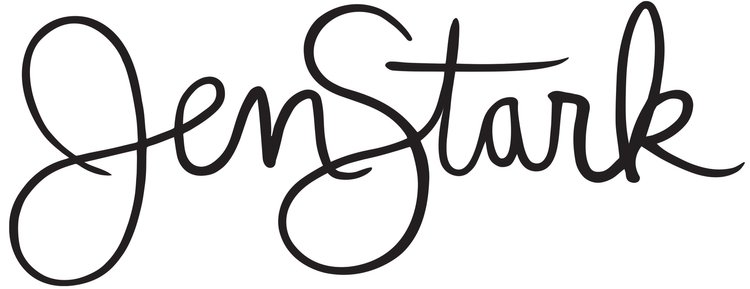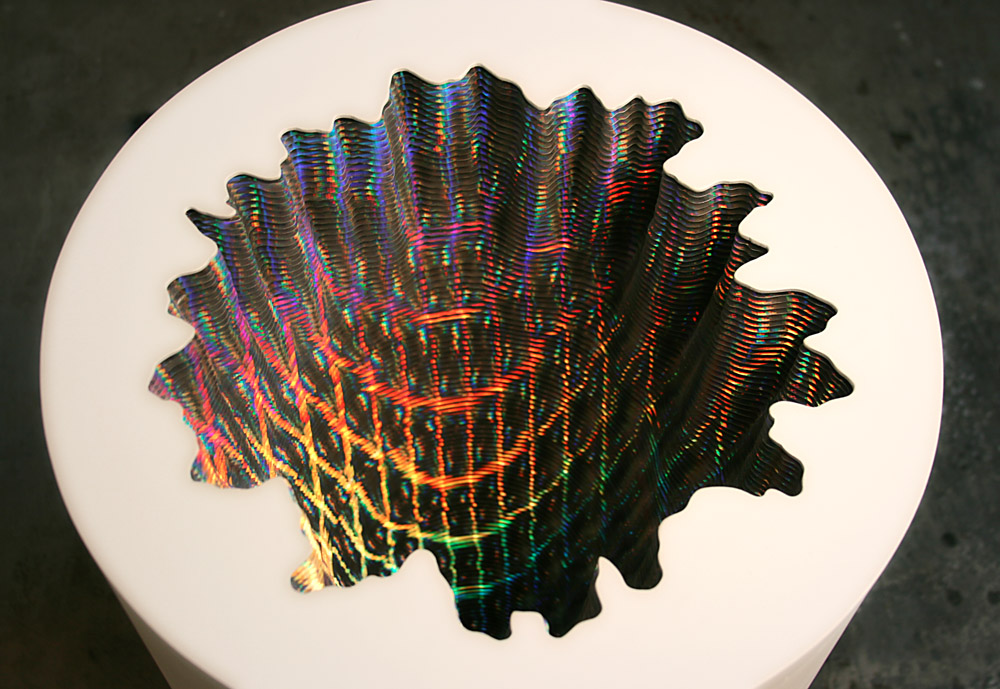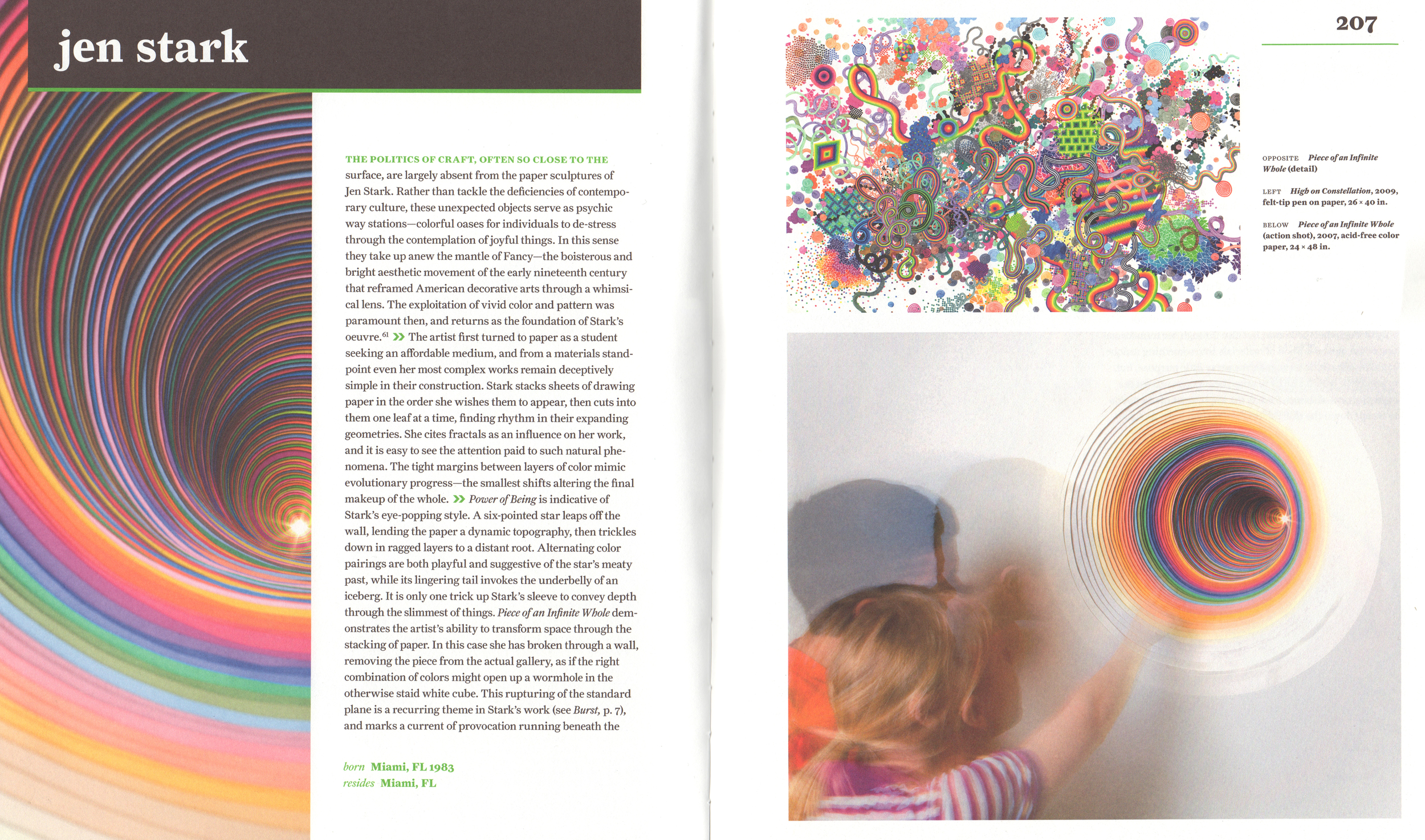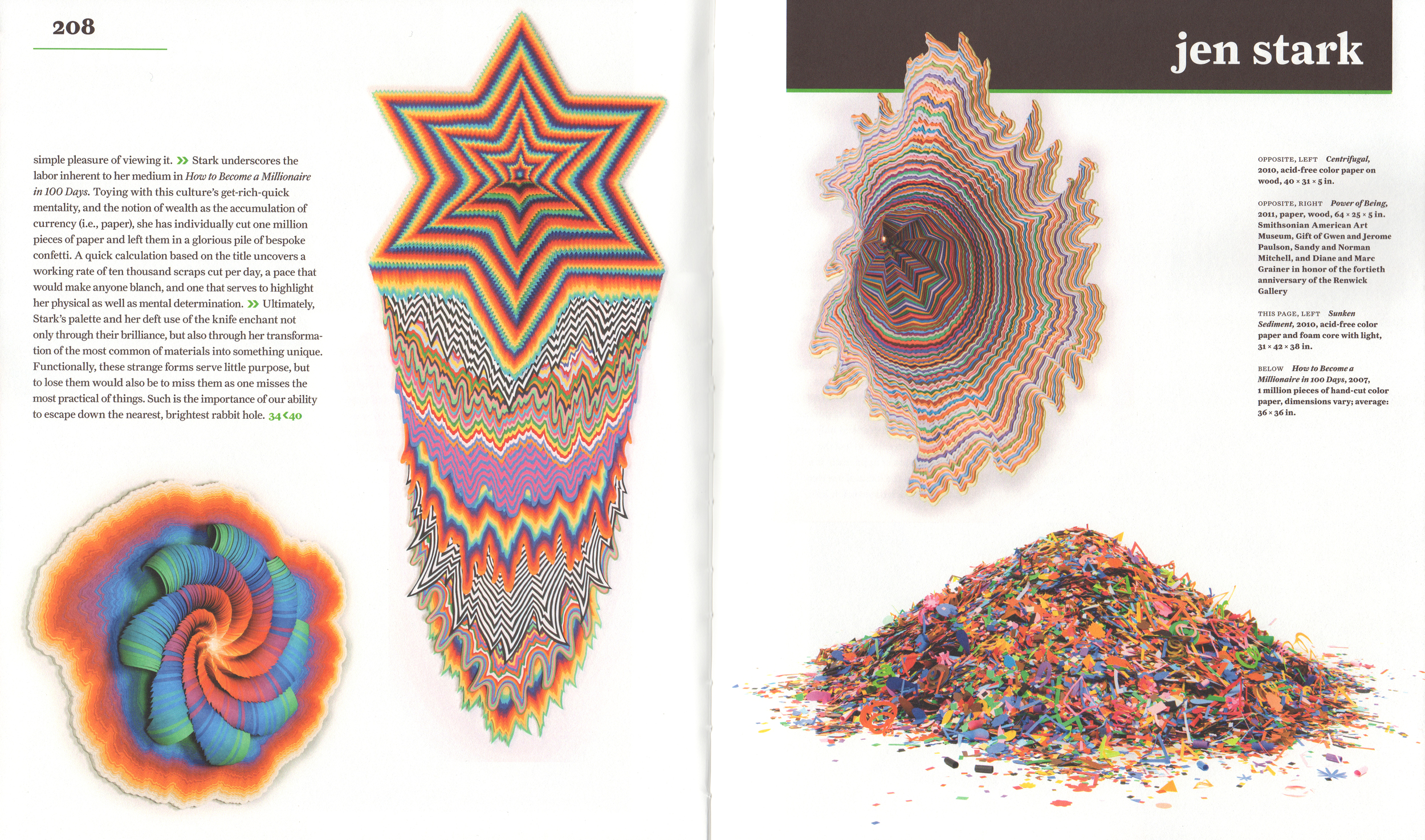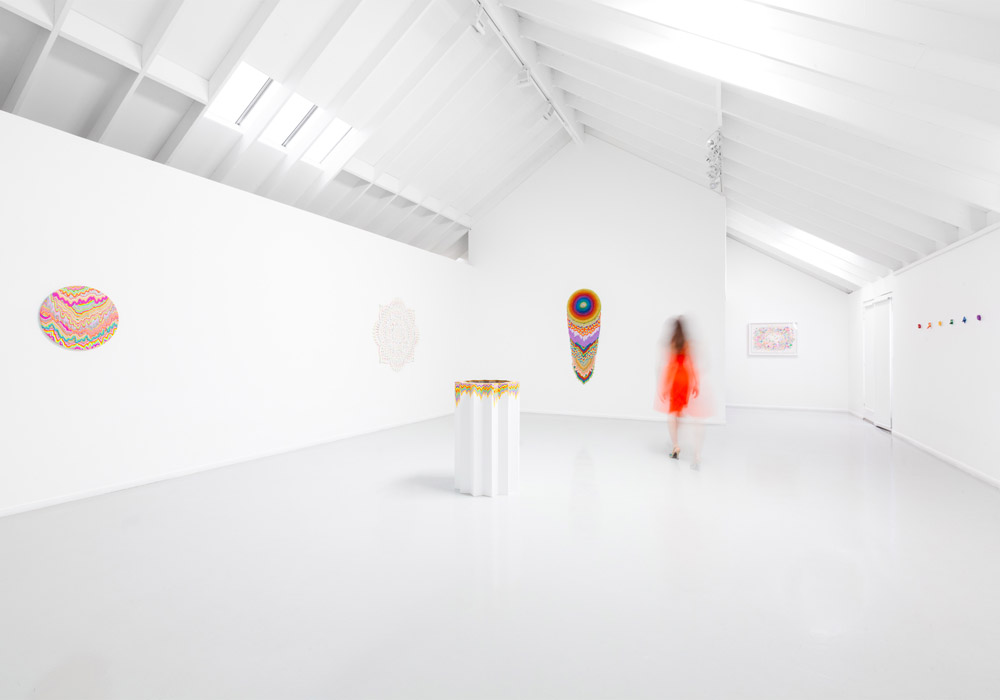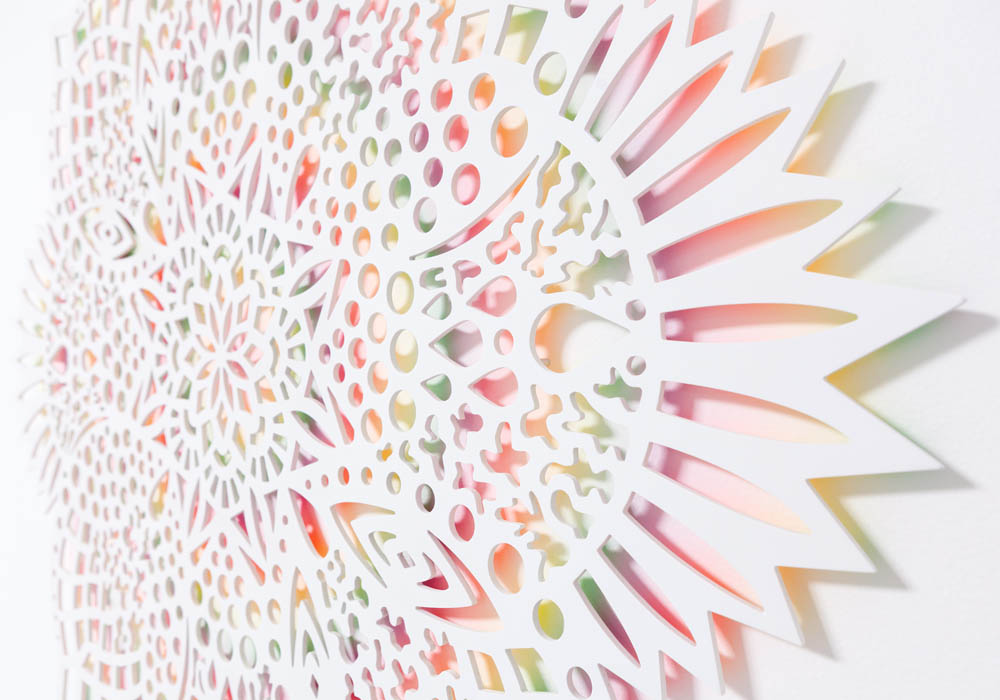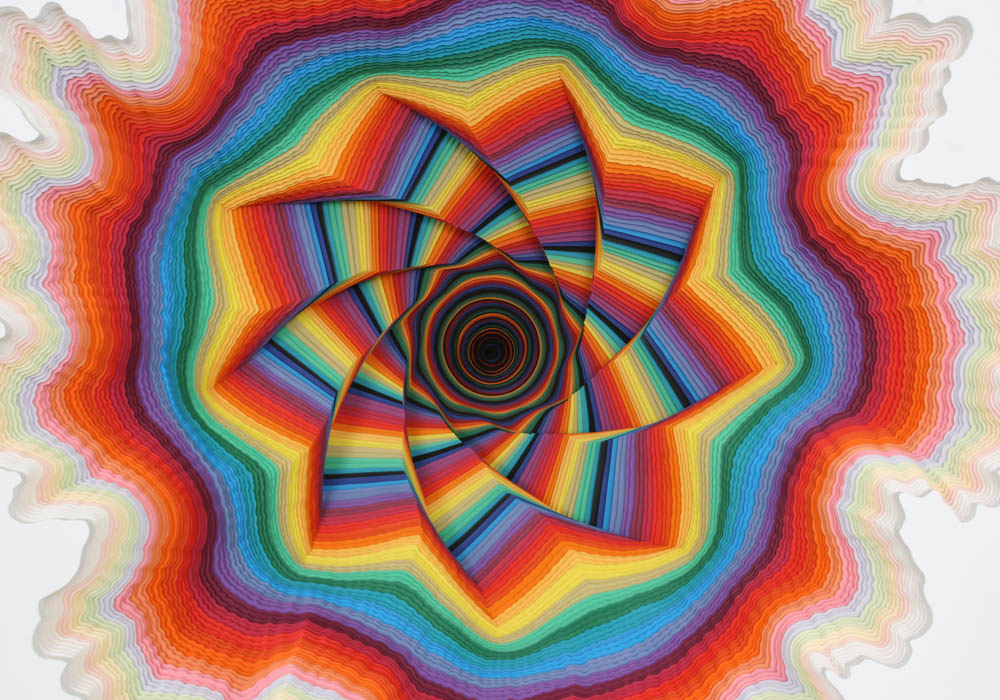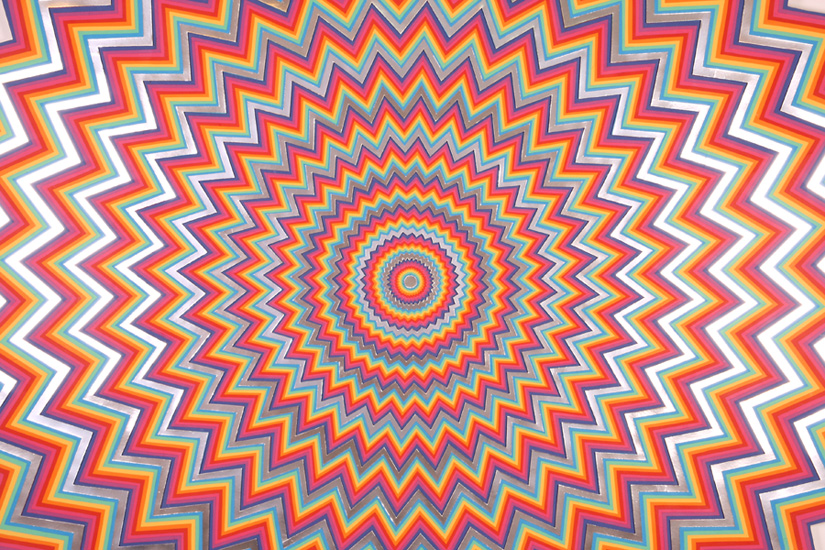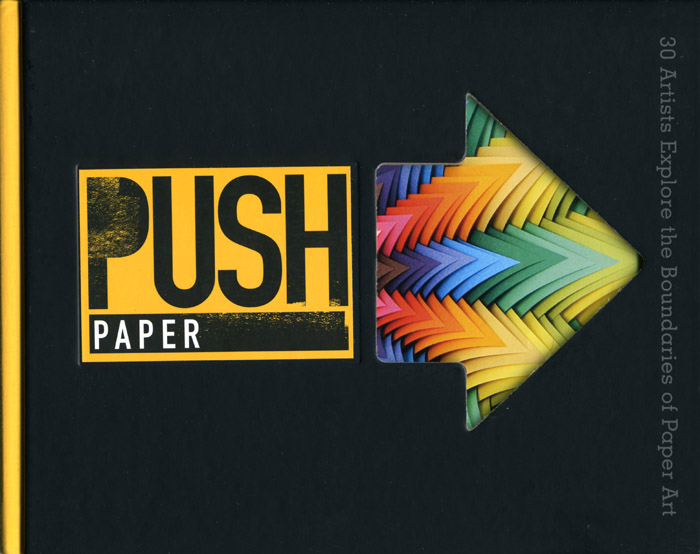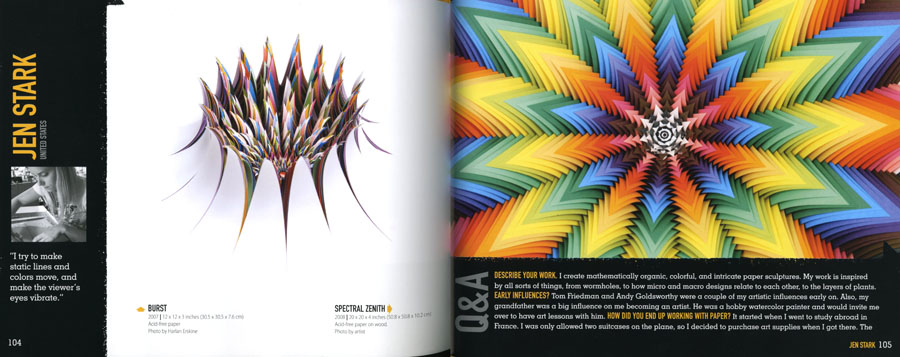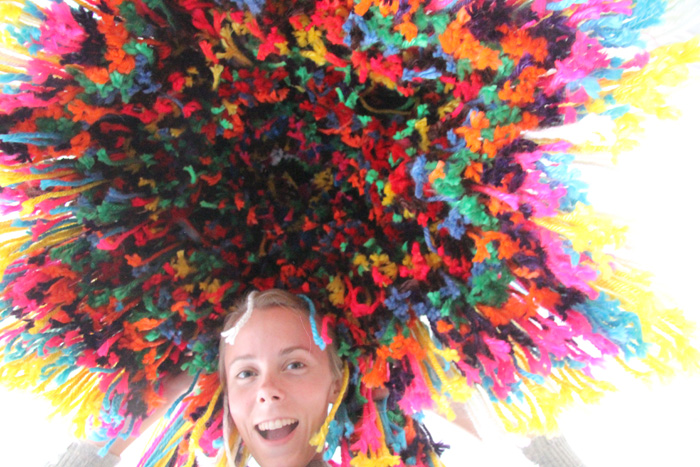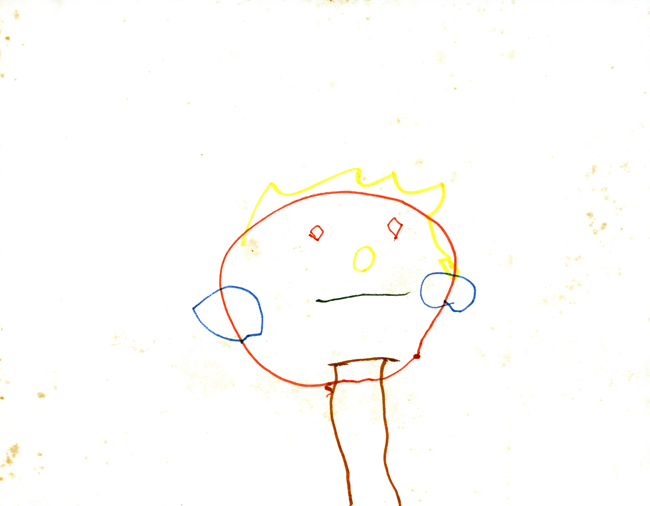Check out this awesome interview I'm in, written by Gabe Scott, in the March 2012 issue of Juxtapoz magazine. Feel free to read the entire interview in the text below the images:
"While this singular aspect allows the sculptures immediately to command one’s attention, upon further observation, the viewer can easily find a quiet ambiance that reverberates in a deeply contemplative state. Only gravity and spacial boundaries seem sure to limit the potential of her work, as her ability to shape, form and render appears infinite." —Gabe Scott

Gabe Scott: I think that the combination of places where you’ve studied and worked is really fascinating. You are a 3rd generation Miamian, and studied at the Maryland Institute of Art in Baltimore. I feel that most creative people are influenced strongly by their surroundings, climate and including weather. Is this true for your? How would you say the two very different urban areas have contributed to or influenced your work?
Jen Stark: I definitely think environment and upbringing can affect art-making. Growing up in Miami I experienced so many different cultures and their colorful energy probably rubbed off on me. Also in Miami, plants are green and thriving year-round, and I was always surrounded by an abundance of them. I think my interest in nature sparked my love of accumulation, layers and microscopic patterning. Because it seems that many people can become stagnant in Miami I decided to go to Baltimore for college, even though I had never visited, or even been in real snow before. I guess the cold weather and fear of crime rate sort of forced me to become creative in the studio, focus on my ideas and let loose the vibrancy! Also, I attribute the start of the paper sculptures to a study abroad trip I took to Aix en Provence, France.
Gabe: When you arrived in France, what was your intent as far as the direction of developing your work? Explain the circumstances, both financial and otherwise, that shaped your shift in direction and contributed to your evolution as an artist.
Jen: When I arrived I had no exact artistic direction. I knew I loved colors and labor intensive work, but hadn’t pin pointed my style yet. I brought two suitcases full of clothes and decided to purchase art supplies when I got there. The euro was very high, so when I went into the art store, I decided to buy one of the cheapest materials, but one that had potential. I purchased an assorted color stack of construction paper and began experimenting in my studio. Eventually, I began turning them into three-dimensional sculptures. Having little money to buy expensive art materials helped me become more creative with the supplies I had, and turn lemons into lemonade! It made me realize I could create artwork out of anything, as long as it was a unique idea and I worked hard at it. That was definitely a big turning point in my evolution as an artist. So, in this case, necessity allowed me to discover a new way of art-making.
Gabe: I sometimes start to give myself a headache, in a good way, trying to follow the geometric composition and spectrum in your pieces. Is mathematics an integral part of your process? Over the course of production, do you allow for much improvisation, or do you find it to be meticulous and orderly?
Jen: Yes! Math is a big part of my work, but I was never very good at it in school. I think I have a better understanding of visual math, and, in fact, every once in a while a mathematician will email me saying that one of my pieces looks just like a specific equation. I sketch the sculptures out before I create them, and there is usually not too much improvisation when constructing them. I might change tiny things but they end up very similar to the sketch. I make drawings too, and see these as more of a spontaneous, organic process. They allow both my mind and hands to take a break from the monotony of the sculptures. The sculptures are very orderly, but when I get in the swing there is a meditative quality in the repetition that I love.
Gabe: How would you characterize your work from a categorical perspective? Sculptural? Collage? Neither? Both A and B?
Jen: I would categorize my work as sculptural because I’m taking something two-dimensional and making it three-dimensional.
Gabe: In order to truly utilize the possibilities of something universally recognized as construction paper, you must have considerable knowledge of fibers and their science. Tell me how you developed this focus and how it is vital to your work. Why were you drawn specifically to this as a medium?
Jen: In college, I majored in Fibers. This usually throws people off because I mainly work in paper and wood, but Fibers at my college was more of a technique and concept-based major. They taught us the basics of things like sewing, screen-printing and weaving, but there was also a big emphasis on ideas, process and accumulation. All the Fibers majors had a love of time-intensive work, and I think that has connected us. I’ve always been drawn to intricate work and labor-intensive, handmade things, so discovering the paper sculptures was a gradual journey from age two to 28! I love how common and versatile paper is. It is in everyone’s daily lives and people tend to overlook the amazing things it can do and be transformed into. I also love the idea of taking something that’s two-dimensional and flat and making it three-dimensional and intricate. I’m still discovering things about my work, which is what keeps me going and makes it fun.
Gabe: I feel like your work imitates a lot of aspects of the natural world—topography, light, heat and gas spectrums, geodesic quantities as well as qualities employed by other natural forces like gravity or relativity. This obviously plays into the mathematical relationship with your process. Do you find yourself discovering similarities in these natural phenomena and their occurrences within your work as each piece unfolds, whether on paper initially or over the course of rendering a sculpture?
Jen: Yes! My work definitely emulates nature. I love how nature is a vast unknown that we have barely begun to understand. I hope to evoke a similar feeling of awe and mystery in my artwork. I enjoy the layers of topographical maps, and how naturally occurring micro designs can look the same as zoomed out macro images. All of these ideas of natural designs are in my head as I execute a sculpture, and they influence my cuts, colors and shapes. The sketches for the work have a bit of this in them, but they really come out in the details as I start creating the piece.
Gabe: You recently did a stop motion animation piece with soundsmith Dan Deacon for the PULSE fair in Los Angeles. How did that collaboration come about? Was this the first time you have animated your sculptures?
Jen: This is officially the third stop-motion animation I’ve created with paper. I’ve always loved animation and I enjoy the time-intensive process and hand cutting each sheet. I am essentially creating a paper sculpture, but instead of simply hanging on the wall and being static, it is animating and moving, and by the end it is pretty much a destroyed pile of cut-up paper.
Gabe: How does your ear translate things to your eye as far as the piece with Dan Deacon? If you are starting with a piece of music, especially one that has a sound collage impression, how do you feel your aural senses can influence your visual senses?
Jen: I’ve only done a few animations, but I try to just make the animation flow with the music. Dan Deacon’s was the first animation I created where I had the music before I began animating. The music is added in the end with others I’ve done. Doing an animation to Dan’s music fit well because the song he gave me was so fluid and almost seemed meditative, which worked well with the organic feel of my animations. It is hard to precisely match up the music with certain moments in the animation. I just take the mood of it and go from there, so it is not too much pressure.
Gabe: I feel like your work could lend itself quite well to outdoor installations on a grand scale, given the right weather resistant materials. With your interest in various aspects of the natural world, do you consider producing work that can exist as an intervention with the environment?
Jen: Yes, I would love to get into larger outdoor sculptures out of wood, metal, or plastic. It would be great to make big installation type work where the viewer can be immersed and actually walk through the piece out in nature. I am totally open to this and hope to do it someday soon! As far as recent outdoor projects, I just finished a huge 90' x 35' dripping psychedelic mural on the outside wall of the Ft. Lauderdale Museum of Art that was finished just in time for Art Basel Miami in early December, 2011.
Gabe: In respect to outdoor events, I had a dream that the topographically influenced aspects of your sculptures lead to you to ambitious long term projects that had a limited lifespan, a la Jean Claude and Christo. Could you foresee embarking on a kind of project that travels beyond the bounds of civic interaction and seeks to simultaneously engage in a dialogue with a specific natural landmark?
Jen: I would absolutely love to someday make a monumental artwork that transcends a gallery. Maybe something dealing with outer space or in the ocean would be great. There is an artist named Jason deCaires Taylor who sunk a bunch of human statues in the Yucatan ocean, which besides looking amazing, used material that encourages reef growth; so someday this sculpture will become a reef thriving with life. I love this idea, and it would be fantastic to someday create artwork at this sort of level, something dealing with both visual and environmental benefits.
Gabe: You’re currently living and working right in the middle of what seems to be a pretty adventurous art scene in Miami—I think people are most familiar with it during Basel and the satellite fairs, which I’m sure is not an appropriate slice of normal life there. How would you describe it in terms of soul, style and character?
Jen: Yes, Miami is very different outside of Basel. Lots of local artists here complain that Basel doesn’t give enough exposure to the real art scene, and that visitors just put up walls, sell art, get drunk and leave. That’s true in a way, but I also think Basel has been a good thing for Miami’s development and helped create more interest in the art scene here. Miami is a fairly young city. There is South Beach on one side, the Florida Everglades on the other, and the Florida Keys to the south, which all make it a pretty diverse and unique environment. Miami is full of things like beaches, tourists, good Cuban food, thunderstorms, tropical plants, and beautiful clouds. It’s not an easy place to be successful doing your own thing, but if you are able to, it is easier to stand out than say in NYC or LA. In terms of art, Miami has a blossoming community that has a lot of great things happening, but also has its weeds. There are a lot of mediocre galleries that tend to pop up once an area gets popular. But if you sift through these and know where to look, there are some great energizing collaborations and art shows happening here. Overall, I’m excited to be living here and have some other awesome Miami friends who are doing great things like FREEGUMS, FriendsWithYou, Frances Trombly, Jim Drain, Bert Rodriguez, Little River CSA and Nick D. Lobo, among others.
Gabe: What would you tell people that Miami has to offer that most outsiders aren’t aware of? And what should they pay more attention to the next time they find themselves there, both as an art community as well as socially and culturally?
Jen: It’s hard to know how day-to-day Miami really is if you only come during the fair. I would suggest trying to make it out to artists studios, visit and talk to them. Otherwise, try to meet the locals, see where we hang out and don’t get caught up in too much partying! I also recommend coming to Miami at a more slow paced time outside of the fairs.
